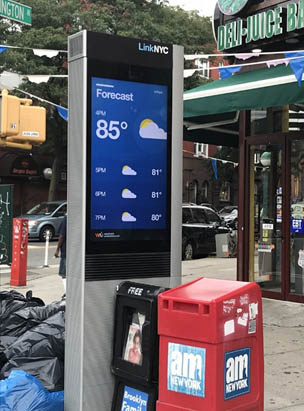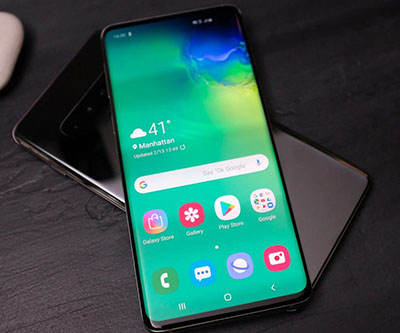Vodka-tonic. Take my picture. Charge my phone. Vodka-tonic. Take my picture. Charge my phone. This (or a similar sequence) is an irritatingly common refrain heard by many waitstaff at lower-tier upper-class Instagram-approved destination restaurants in New York City—presumably other variations proliferate throughout the world’s urban centers. While vodka and digital reproduction make fruitful grist for social critique, the focus of the following is on the request to infuse one’s portable appendage with fresh electricity. There are a number of intriguing aspects of this “charging culture,” from its role in the resource consumption chain (Parikka 2015), to infrastructural adaptations appearing in charging societies (Larkin 2013), to the implications of portable appliances on mobility studies (Schiller 2011), to the novel linguistic interactions engendered by electronic communications (Squires 2010). In concert with these developments, the following discusses the metabolism of charging culture—that is, the processes that are necessary for the maintenance of life.
Midnight Mortality
Most definitions of metabolism include words like living, life, organic, or organism—concepts that, unless deployed metaphorically, are not usually used to describe the electric animation of appliances. While smartphones are rarely referred to as living, as those within charging culture know well, they are constantly dying. This language of death and accordant anxiety it instills has precipitated a new set of social relations within the community of chargers. There is a new empathy. When one tells us their phone is about to die, we gravely appreciate that we may be losing them for the night (see Figure 1). If we’re in the physical proximity of someone else’s dying phone we may try to offer them an electric hit. Many hubs of sociality, such as bars and restaurants, provide patrons with outlets for quick electricity transfusions. Within charging culture there is frequently a mutual appreciation of the preciousness of battery life and frequently a common willingness to protect this life.
For those of the charging culture, how are social relations (re)calibrated by the persistent (almost daily) fight against the inexorable slippage toward death of the primary ventricle of communication and expression? One is reminded of the Mark Doty quote, “All my life I’ve lived with a future which constantly diminishes but never vanishes” (2009). Does the electric precarity of battery life mirror the Damoclean daily struggles of neoliberal subsistence epitomized by gig work? Is it too morbid to analogize the draining percentage of a phone’s battery icon to the “life in prognosis” discussed by Jain (2007)—i.e., you’ve been given a 35% chance of surviving? The daily nourishment of battery life that charging culture pursues seems to follow neither the trajectory of straight time nor queer time framed by Halberstam (2005)—there is no teleologically progressing trajectory enclosing us, yet we remain fixated on a downward counting clock of battery senescence, which relentlessly tethers us to a capitalized infrastructure. Commenting on immortality enthusiasts pioneering cryogenics and Kurzweilian singularity, Abou Farman’s description of organic bodies eerily echoes the terms used to describe rechargeable appliances—death is only a temporary condition (2012). In charging culture, one is never totally dead. As with the jolt of a defibrillator, electrical resuscitation is always possible.
Some within charging culture are more responsible and cautious when it comes to caring for their battery life, while others court disaster and persistently float on the precipice of battery death. Some shudder at being only 20% alive, while others comfortably operate in this abysmal quintile. While there are a number of strategies for maintaining battery life (some charge while they sleep, some in the cubicle, some on the go), it is hard to resist the comparison of phones to bodies that need periodic sustenance. The metaphors flow back and forth with ease—we humans need recharging from time to time, just as batteries may be healthy or dead. The mortal stakes of such electric language may be partly responsible for the relative rapidity with which charging cultures have been infrastructurally accommodated—in the dying and dead world of batteries, it is imperative to have charging stations in airports, libraries, and even public bathrooms.
Infralithium Wetware
In 2014 New York City initiated the LinkNYC program, constructing thousands of multi-purpose streetside electronic stalls (Figure 2). These urban henges display information about the weather, subway service, and New York trivia. Most practically, though, they offer free wi-fi service, domestic calling, and USB ports for recharging phones. LinkNYC kiosks were envisioned as replacements for New York’s 10,000 payphones. However, this “free” charge comes at a suspect cost—massive involuntary surveillance and data collection, as well as commercial oversaturation (Holleran 2018). And, as is revealed in video of LinkNYC vandalism, the kiosks nest security cameras easily accessible by the NYPD.

Figure 2. LinkNYC kiosk (surrounded by garbage and future garbage).
While LinkNYC kiosks offer alarming tools of suppression, they do evince the velocity at which infrastructure has been adapted to the needs of charging culture. An urban ecosystem has quickly developed to support the life of rechargeable batteries. The USB plug which feeds electricity to the lithium-ion battery is becoming increasingly reworked into domestic infrastructure (Figure 3). The electric ecosystem which releases life-sustaining voltage into its ambient surroundings is a cyborgian mesh of metal and flesh, incorporating human vendors as much as rare-earth minerals.

Figure 3. Evolution of wall outlets to accommodate charging culture.
While price and availability of the tools needed to recharge one’s portable communications accelerator vary around the globe, the creative approaches to facilitating the feeding of electricity into phones indicates the deep entanglement of battery life with the needs of organic life. Describing Nigerian charging culture Smith (2006) writes of hawkers selling recharge cards and new batteries on the street, making it “much more convenient to replace a cell phone battery or buy a new recharging cord and adapter in Nigeria than it is in North America.” In Tokyo, public charging stations have been put in place near popular tourist spots so sightseers can snap photos endlessly without worry of battery fatigue.
Metabolodynamics
The common concept that underwrites the easy two-way flow of metaphors between biotic life and electronic appliances is energy. The word energy is ubiquitous and has lured in numerous semantic registers outside of its meaning in the physical sciences. Comparing the “energy” of metabolism and electric charge is illuminating. The metabolism of biology transforms organic matter into energy. The (fossil fueled) powerplants that charge most phones transform organic matter into energy. In the case of charged organisms the organic matter consists of recently-dead plant and animal life. In the case of charged electronics the organic matter consists of long-dead (millions of years) plant life (coal or petroleum).
Are, then, the metaphors of life and death appropriated by charging culture actually so metaphorical? Dead phones and dead organisms share the inability to harness the latent energy of once living matter. Keeping a phone alive requires much the same fundamental work as keeping a person alive. The perceived dissonance between organic and synthetic animation has much to do with the history of energy. Since the 19th century, energy has been the dominant concept around which causality has been understood (in industrialized societies). While this understanding certainly holds up under rigorous mathematic and chemical scrutiny, it is worth noting that energy is a concept borne of capitalist modes of production. Rather directly, the physics which underwrites energy was developed through the study of the steam engine. Carnot, Regnault, Helmholtz, Clausius, and Kelvin all nuanced their formulations of the relationship between heat, movement, and pressure from examinations of the steam engine. In no small part because of this, energy is defined as the numerated mathematical relationship between heat, movement, and pressure.[1] Energy and causality are not framed through metabolodynamics (or for that matter hydrodynamics or geodynamics), but thermodynamics.

Figure 4. Samsung’s getting to know each other better.
The public empathy often intoned in the care of battery life and death, however, evinces a metabolic appreciation for these gadgets—an appreciation underwritten by their genuine role in sustaining normalized social relations in charging cultures. The intimacy of the Samsung Galaxy S10’s snuggle charging hints at the metabolized conception of electric socialization (Figure 4). Sadly, this metabolic appreciation often fails to extend to other Earth processes and organisms, which have been rendered thermodynamic by the entwined histories of economics and energy. That is, forests, fish, and foreigners are often reduced to their relationship to fuel (energy) rather than their role in sustaining life (metabolism). When keeping phones from dying is more important than keeping forests alive, it would seem that the metaphor and the reality within charging culture have been turned inside out.
Note:
[1] There are many notions of energy used in physics, chemistry, and biology, but the popular notion of energy as a motive force is this purely numerical relationship. Coal is not energy; it is the relationship between heat and movement, which becomes rather noticeable when coal is burnt.
References
Doty, Mark. 1997. Heaven’s coast: A memoir. New York: HarperPerennial.
Farman, Abou. 2012. Re-enchantment cosmologies: Mastery and obsolescence in an intelligent universe. Anthropological Quarterly 85(4): 1069-88.
Halberstam, Jack. 2005. In a queer time and place: Transgender bodies, subcultural lives. New York: New York University Press.
Holleran, Sam. 2018. The MTA and de Blasio’s electronic ads threaten New Yorkers with visual overload. Garage.
Jain, S. Lochlann. 2007. Living in prognosis: Toward an elegiac politics. Representations Representations 98(1): 77-92.
Larkin, Brian. 2013. The politics and poetics of infrastructure. Annual Review of Anthropology 42(1): 327-43.
Parikka, Jussi. 2015. A geology of media. Minneapolis: University of Minnesota Press.
Schiller, Nina Glick, and Ayşe Çağlar. 2011. Locating migration; rescaling cities and migrants. Ithaca, NY: Cornell University Press.
Smith, Daniel Jordan. 2006. Cell phones, social inequality, and contemporary culture in nigeria. Canadian Journal of African Studies / Revue Canadienne Des Études Africaines 40(3): 496-523.
Squires, Lauren. 2010. Enregistering internet language. Language in Society 39(4): 457-92.
